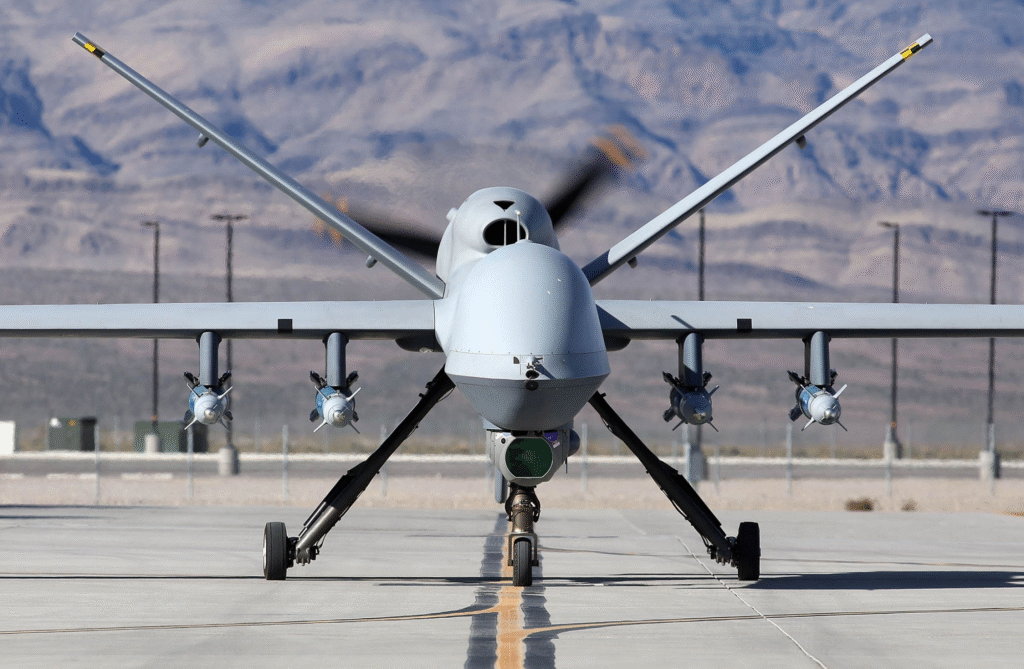Ethiopia has seriously invested in expanding and modernizing its airbase infrastructure to support an increasingly sophisticated fleet of unmanned aerial vehicles (UAVs), advancing both surveillance and combat drone missions. This effort has unfolded alongside rapid drone acquisitions, defense-industry development, and regional partnerships.

- Strategic Drone Procurement and Fleet Expansion
- Ethiopian forces have deployed a diverse range of drone models—from Iranian Mohajer‑6 to Chinese Wing Loong II and Turkish Bayraktar TB2 and Akinci platforms—to enhance reconnaissance and strike capabilities during internal conflict, especially in the Tigray region . These acquisitions prompted the military to upgrade existing airbases and build dedicated infrastructure for storage, maintenance, and operational control of UAVs.
- Drone Hangars and Operational Facilities
- Satellite imagery and investigative reports confirm the construction of specialized drone hangars at key Ethiopian airbases near Bishoftu (also known as Debre Zeyit), designed to house and support advanced TB2 and Akinci systems . These installations include reinforced shelters, drone-specific command centers, secure communications rooms, and facilities for ordinance loading and equipment calibration.
- SkyWin Aeronautics Industries: Building Homegrown Production
- A major milestone was achieved with the launch of SkyWin Aeronautics Industries, Ethiopia’s state-run drone manufacturing plant in Addis Ababa . While not an airbase itself, its emergence signals rising emphasis on home-grown UAV logistics, industry-embedded infrastructure, and integration into Ethiopia’s military aviation ecosystem.
- Maintenance and Support Infrastructure
- In tandem with drone hangars, airbases received new maintenance depots, depot-level repair shops, and ground-control stations tailored to UAV operations. Reports highlight Ethiopian efforts to upgrade technical facilities for sensor calibration, spare-parts inventory, and training of personnel in drone-specific maintenance protocols.
- Intelligence, Surveillance, and Reconnaissance (ISR) Coordination
- New infrastructure upgrades include enhanced ISR control centers and data-processing hubs within airbases to coordinate live imagery feeds from drones. These centers link to national intelligence agencies, including the Extended Defense Forces and the National Intelligence and Security Service (NISS), which operate UAVs jointly with the Air Force . This enables rapid target identification, mission planning, and swift deployment during internal security operations.

Integration with Offensive Air Assets
- Ethiopia had introduced Su-30 fighter jets and Turkish Akinci UCAVs into its air force inventory . To operate these sophisticated platforms, airbases underwent upgrades including new hardened shelters, extended runways capable of supporting larger takeoff weight, advanced ground radar, and expanded command posts to manage multi-type air operations—both manned and unmanned.
- Regional Cooperation and Training Infrastructure
- Infrastructure investment extended beyond Ethiopia’s borders to collaboration opportunities. Nigerian Air Force delegation visited Ethiopian airbases and aerospace facilities to explore partnerships in UAV development, joint R&D, and pilot-tech training . Such exchanges cultivate infrastructure-used for doctrinal sharing, simulation facilities, and capability demonstrations tailored to drone operations.
- Industrial Synergy and Future Projects
- Ethiopia’s defense-industrial planning includes expanding airbase infrastructure to support future indigenous systems outlined in its long‑term vision: local drone series (e.g., Panteri‑I, Guguti), loitering munitions, integrated radar and command networks, and domain-spanning ISR architectures . These strategies envision reinforcing airbases with R&D labs, communications hubs, AWACS and refueling support systems, and expanded electronics production facilities—making them drone-centric operational hubs.
- Infrastructure Motivated by Security Imperatives
- The Tigray war, al-Shabaab cross-border threats, and occasional regional tensions accelerated the air force’s transition from a primarily defensive posture to integrated offensive operations using drone platforms . Airbases in strategic locations—such as those south of Tigray and near the Somali border—have been reinforced to support rapid drone deployment, strike coordination, ISR-led targeting, and close integration with ground and intelligence units.
- Institutional Outcomes and Strategic Impacts
- Ethiopia’s upgraded airbases, drone hangars, and command infrastructure collectively enhanced its ability to sustain prolonged drone operations, reduce reliance on foreign support, and execute precision targeting. The alignment with SkyWin’s manufacturing output and planned indigenous UAVs marks a shift toward self-reliant aerial warfare capability. At the same time, infrastructure modernization supports capacity-building initiatives, enabling training exchanges (e.g., with Nigeria), simulation-based instruction, and shared operational doctrine across African partners.
Summary
Ethiopia undertook a comprehensive overhaul of its airbase infrastructure to support drone missions—investing in bespoke hangars, ground control centers, technical maintenance hubs, and intelligence coordination facilities. Coupled with a growing and increasingly diverse drone fleet (Bayraktar, Akinci, Wing Loong, Mohajer), the establishment of SkyWin Aeronautics, and evolving regional defense partnerships, these enhancements signal Ethiopia’s ambition to operate UAV systems effectively, sustain combat and ISR sorties autonomously, and contribute to emerging African drone industry ecosystems.
Together, these developments illustrate Ethiopia’s deliberate progression toward drone capability maturity—anchored in upgraded airbases, evolving technological capacity, and operational doctrine shaped by both internal conflict needs and continental cooperation.


